Transnational Organized Crime Using Luxury Goods For Money Laundering
Understanding the Money Flows with Transnational Organized Crime
An Overview of Transnational Organized Crime Money Laundering
Author:
• SCARS Editorial Team – Society of Citizens Against Relationship Scams Inc.
About This Article
Transnational organized crime (TOC) is increasingly turning to luxury goods like watches and handbags for money laundering. These items’ high value, portability, and established resale channels make them attractive for criminals to hide and convert illicit gains.
TOC methods involve bulk purchases, smuggling, fake documentation, and online marketplaces. The consequences impact businesses through reputational damage and market distortion, governments battling financing of illegal activities, and consumers facing trust issues about product authenticity.
Combating this trend requires businesses to improve due diligence, governments to enhance international cooperation and tighten regulations, and consumers to be aware and make responsible purchasing decisions. By recognizing the problem’s methods, impact, and potential solutions, we can work together to ensure luxury retains its shine without masking criminal activity.
Beyond Bling: How Luxury Goods Fuel Transnational Organized Crime Money Laundering
The world of high-end watches, handbags, and jewels isn’t just about exclusivity and status for Transnational Organized Crime in their drive for frictionless money laundering.
Behind the glittering facade lies a murky reality: transnational organized crime (TOC) increasingly leverages luxury goods for money laundering, exploiting their high value, portability, and ease of resale. This article delves into the methods and implications of this concerning trend, impacting businesses, governments, and consumers alike.
The Allure of Luxury in Money Laundering
Transnational Organized Crime groups, ranging from drug cartels to cybercriminals, seek to legitimize their illicit gains. Luxury goods present an attractive option due to their:
- High Value: A single watch can be worth millions, easily storing substantial sums in a compact form.
- Limited Supply and Demand: Rarity drives prices higher, further magnifying laundering potential.
- Global Market: Luxury goods transcend borders, facilitating international transactions easily.
- Resale Channels: Established auction houses and private dealers provide discreet avenues for conversion back to cash.
Transnational organized crime (TOC) has discovered a treasure trove in the world of luxury goods, and “The Allure of Luxury” plays a critical role in their illicit activities. High-end watches, handbags, and jewels aren’t just symbols of status and exclusivity; for Transnational organized crime groups, they represent a potent tool for money laundering. The very factors that make these items desirable – their significant value, limited supply, and global market – also make them perfect instruments to hide and legitimize ill-gotten gains.
Think of a single, meticulously crafted watch worth millions. In the hands of a criminal organization, it can store vast sums of money in a compact, portable form. The limited availability and high demand for such items further inflate their value, allowing criminals to pack a bigger punch with each “purchase.” Moreover, the global reach of the luxury market facilitates international transactions, enabling the seamless movement of laundered funds across borders. Established auction houses and private dealers provide discreet avenues for converting these ill-gotten assets back into seemingly clean cash, completing the laundering cycle.
So, while the average consumer might associate luxury with refined taste and opulence, transnational organized crime sees a different opportunity – a gateway to legitimize their dirty money and fuel their criminal empires. Understanding this sinister side of the allure of luxury is crucial in combating the growing threat of TOC’s infiltration into the world of high-end goods.
Methods of Manipulation
Transnational Organized Crime employs various strategies to exploit luxury goods for laundering:
- Bulk Purchases: Inflated purchases of high-end items, often with cash, raise red flags but can go unnoticed due to the nature of the market.
- Smuggling: Goods are illegally transported across borders, bypassing official channels and scrutiny.
- False Documentation: Fake invoices and receipts disguise the true origin and value of items.
- Online Marketplaces: Illicit actors exploit anonymity and ease of access on online platforms to trade laundered goods.
Transnational organized crime (TOC) has discovered a lucrative avenue to inflate their profits: manipulating the values of luxury goods like watches, jewelry, and art. Here’s how they achieve this:
Cornering the Market: Transnational organized crime groups may target specific, limited-edition items, buying them in bulk through legitimate or illegitimate means. This creates artificial scarcity, driving up prices for genuine buyers and creating a black market for resold goods.
Inflated Purchases: TOC utilizes cash-heavy purchases of high-end items, often exceeding market value. While raising red flags, these transactions can go unnoticed due to the opacity of some luxury markets. This inflates the perceived value of similar items, benefiting them when they later sell through legitimate channels.
False Documentation & Provenance: Forging invoices, receipts, and certificates of authenticity allows transnational organized crime to sell laundered items at a premium, justifying inflated prices and disguising their illicit origins. This damages the credibility of the entire market and erodes consumer trust.
Influencing Trends & Auctions: Infiltrating online communities and manipulating online auctions, TOC groups can artificially inflate demand for specific items, driving up prices and creating a feeding frenzy for their own laundered goods.
The consequences of these manipulations are wide-ranging. Consumers risk purchasing counterfeits or overpaying for laundered items. Legitimate businesses face unfair competition and reputational damage. The luxury market loses its prestige and authenticity. Ultimately, these manipulations fuel further criminal activities, perpetuating a harmful cycle.
Combating this requires a multi-pronged approach: stricter due diligence by businesses, enhanced law enforcement cooperation, regulatory reforms to tighten loopholes, and consumer education. By recognizing these tactics and working together, we can safeguard the integrity of the luxury market and ensure its true allure isn’t overshadowed by the shadow of criminal activity.
The Transnational Organized Crime Ripple Effect
The consequences of Transnational Organized Crime’s involvement in the luxury goods market are far-reaching:
- Reputational Damage: Brands associated with laundering activities face consumer backlash and regulatory scrutiny.
- Market Distortion: Artificially inflated prices and manipulated supply chains disrupt legitimate businesses.
- Financing Illicit Activities: Laundered funds fuel further criminal enterprises, perpetuating a cycle of harm.
- Erosion of Trust: Consumer confidence in the authenticity and ethical sourcing of luxury goods diminishes.
The ripple effect of transnational organized crime’s manipulation of luxury goods extends far beyond inflated prices and tarnished brand reputations.
Here’s a deeper look at the wider consequences:
Eroding Consumer Trust: Consumers, once enticed by the exclusive aura of luxury goods, now face the dilemma of potential inauthenticity or unknowingly contributing to criminal activity. This breeds distrust towards brands, retailers, and even other consumers, impacting overall market confidence and purchasing decisions.
Financing Illicit Activities: The laundered profits generated through manipulated luxury goods markets fuel a vicious cycle. These funds provide the lifeblood for further criminal enterprises, ranging from drug trafficking and human smuggling to cybercrime and terrorism. This not only endangers communities but also diverts resources from essential services and societal progress.
Market Distortion and Unfair Competition: Transnational organized crime’s artificial manipulation disrupts the natural equilibrium of luxury markets. Artificially inflated prices and manipulated supply chains squeeze out legitimate businesses struggling to compete with unfair practices. This stifles innovation, reduces consumer choice, and ultimately harms the overall health and sustainability of the market.
Erosion of Social Values: The very essence of luxury – exclusivity, craftsmanship, and heritage – becomes tainted by association with criminal activity. This undermines the positive contributions of legitimate luxury brands to cultural preservation, artistic expression, and skilled craftsmanship. The overall impact is a degradation of societal values and an erosion of the aspirational qualities traditionally associated with luxury.
Understanding these far-reaching consequences underscores the urgency for collective action. Only through collaboration between consumers, businesses, regulatory bodies, and law enforcement can we effectively counter TOC’s manipulative tactics and protect the integrity of the luxury market, ensuring its role in society remains positive and sustainable.
Combating the Luxury Goods Trend
Combating this complex issue requires a multi-pronged approach:
- Enhanced Due Diligence: Businesses must implement stricter protocols to identify and flag suspicious transactions.
- International Cooperation: Collaboration between law enforcement agencies across borders is crucial for tracking and disrupting laundering networks.
- Regulatory Reforms: Strengthening anti-money laundering regulations and closing loopholes can hinder illicit activities.
- Consumer Awareness: Educating consumers about the risks and encouraging responsible purchasing choices can empower them to avoid contributing to the problem.
In the face of transnational organized crime’s (TOC) growing exploitation of luxury goods for money laundering, global law enforcement agencies are stepping up efforts to combat this sophisticated threat. Interpol, the world’s largest international police organization, plays a crucial role in this fight through several key strategies:
Information Sharing and Coordination: Interpol facilitates the exchange of intelligence and best practices between its 195 member countries. This allows law enforcement agencies to identify emerging trends, track criminal networks across borders, and share evidence for effective investigations. Specialized units within Interpol, like the Counterfeit and Stolen Goods Centre, further enhance collaboration by providing targeted expertise and operational support.
Public awareness campaigns: Educating consumers about the red flags associated with laundered luxury goods is crucial. Interpol actively raises awareness through campaigns like “Buy Smart” and “Stop Organized Crime”, empowering consumers to avoid contributing to the problem by making informed purchasing decisions. This reduces demand for laundered goods and helps disrupt criminal networks.
Training and Capacity Building: Equipping law enforcement officers with the knowledge and skills to tackle money laundering through luxury goods is essential. Interpol delivers specialized training programs for investigators, customs officials, and financial intelligence units, covering topics like financial analysis, identifying suspicious transactions, and investigating online marketplaces used for illicit trading.
International Operations and Joint Investigations: Interpol actively participates in and coordinates international operations targeting specific criminal networks involved in luxury goods laundering. These operations leverage the combined resources and expertise of multiple countries to dismantle criminal structures, seize illicit assets, and bring perpetrators to justice. Examples include Operation Jupiter which targeted illicit goods trafficking in South America and Operation I-Hawk which disrupted online sales of illicit luxury goods in Southeast Asia.
Public-Private Partnerships: Collaboration with the private sector, including luxury brands, auction houses, and online marketplaces, is vital. Interpol fosters partnerships to develop tools and protocols for identifying suspicious transactions, reporting suspicious activity, and preventing the sale of laundered goods through legitimate channels.
These efforts showcase Interpol’s commitment to tackling the complex issue of money laundering through luxury goods. By fostering international cooperation, raising awareness, and empowering law enforcement agencies, Interpol plays a vital role in disrupting criminal networks, protecting the integrity of the luxury market, and safeguarding communities from the harmful impacts of organized crime.
Examples
Recent Cases of Transnational Organized Crime Using Luxury Goods for Money Laundering:
- Singapore’s massive S$1 billion money laundering crackdown: Police raided Good Class Bungalows and prime area condominiums among other locations, and seized assets including cars, watches, handbags and cash.
- 1MDB Scandal: This Malaysian sovereign wealth fund embezzlement involved billions laundered through high-end art, diamond jewelry, and real estate, culminating in the arrest of high-profile figures like Malaysian Prime Minister Najib Razak.
- Operation Car Wash (Brazil): This sprawling investigation exposed widespread bribery and corruption involving state-owned oil company Petrobras, with suspects laundering illicit gains through luxury cars, yachts, and apartments.
- Teodorin Obiang (Equatorial Guinea): The vice president of this African nation faced charges in France for amassing a lavish lifestyle through corruption, including spending millions on luxury cars, mansions, and artwork.
- Luxury Watch Smuggling Rings: Transnational networks often smuggle high-value watches across borders to avoid taxes and scrutiny, further concealing stolen or laundered funds. A recent Interpol operation seized millions of dollars worth of smuggled luxury watches in Southeast Asia.
- Watches As Tools Of Money Laundering And Illicit Finance: Luxury timepieces are one of the most effective mediums to move illicit funds around the globe and a tool to integrate those ill-gotten gains into the financial system. Transnational criminal networks, terrorists, narcotraffickers and corrupt politicians have used watches to launder money as a part of global illicit finance. The Weight of a Million Dollars – 22 pounds
- Fake Luxury Watches Worth Over $1.2 Million Intercepted by CBP at LAX: U.S. Customs and Border Protection (CBP) officers assigned to the Los Angeles International Airport (LAX) Air Centralized Examination Station (Air-CES), in coordination with Import Specialists assigned to the Consumer Products & Mass Merchandising Center of Excellence and Expertise, seized 41 watches bearing counterfeit luxury trademarks. If genuine, the seized watches would have had an estimated manufacturer’s suggested retail price (MSRP) of $1,294,500.
- Interpol Operations against illicit goods: Operation Jupiter helps combat the trafficking of illicit goods in South America. The objective is to identify and dismantle the organized crime groups involved and to facilitate regional cooperation during a common operational phase. The following countries participated in Operation Jupiter X (2020): Argentina, Brazil, Chile, Colombia, Ecuador, Panama, Paraguay, Peru and Venezuela.
These are just a few examples, highlighting the diverse ways criminals leverage luxury goods for money laundering.
Summary
The use of luxury goods for money laundering presents a significant challenge for businesses, governments, and society as a whole. Recognizing the methods, understanding the impact, and actively supporting solutions are crucial steps towards dismantling this harmful practice and safeguarding the integrity of the luxury market. By working together, we can ensure that the allure of luxury doesn’t mask the shadow of criminal activity.
By staying informed about evolving tactics and supporting initiatives like Interpol’s efforts, each of us can contribute to dismantling these harmful activities and safeguarding the integrity of the global economy.
Please Rate This Article
Please Leave Us Your Comment
Also, tell us of any topics we might have missed.
Thank you for your comment. You may receive an email to follow up. We never share your data with marketers.
-/ 30 /-
What do you think about this?
Please share your thoughts in a comment above!
More Related Information:
- UNODC Report on Casinos and Cryptocurrency Scams and Money Laundering 2024 (scamsnow.com)
- Chinese Money Laundering Organizations (CMLOs) – Use of Counterfeit Chinese Passports – 2024 (scamsnow.com)
- EUROPOL Report: Money-Laundering Criminals Are Adapting To New Technology Faster Than Authorities Can Keep Up (scamsnow.com)
- NASDAQ Global Financial Crime Report: Criminals Took US$3.1 Trillion from Victims and the Economy in 2023 (scamsnow.com)
- Irish Criminal Assets Bureau – Deny And Deprive Criminals Of Assets Acquired Through Criminal Conduct – 2023 (scamsnow.com)
-/ 30 /-
What do you think about this?
Please share your thoughts in a comment above!
SCARS LINKS: AgainstScams.org RomanceScamsNOW.com ContraEstafas.org ScammerPhotos.com Anyscam.com ScamsNOW.com
reporting.AgainstScams.org support.AgainstScams.org membership.AgainstScams.org donate.AgainstScams.org shop.AgainstScams.org
youtube.AgainstScams.org linkedin.AgainstScams.org facebook.AgainstScams.org
ARTICLE RATING
TABLE OF CONTENTS
CATEGORIES
MOST POPULAR COMMENTED ARTICLES
POPULAR ARTICLES
U.S. & Canada Suicide Lifeline 988
![NavyLogo@4x-81[1]](https://scamsnow.com/wp-content/uploads/2025/04/NavyLogo@4x-811.png)
ARTICLE META
WHAT PEOPLE ARE TALKING ABOUT LATEST SITE COMMENTS
See Comments for this Article at the Bottom of the Page
on The SCARS Institute Scam Victim Recovery Timeline – 2025: “Wow. I umm experienced some of the later curves. I have been bouncing back and forth between asking myself why…” Jul 11, 00:01
on Transference And Emotional Danger After The Scam – 2024: “Thank you for the kind but firm reminder that the person in the stolen profile photo has their own life.…” Jul 9, 01:26
on ‘Mental Defeat’ – The Unique Condition Of Giving Up – 2024: “Thank you for another great article. I can see from this article that mental defeat would be debilitating to a…” Jul 9, 00:49
on Trust: Romance Scams Betrayal And Scam Victims – 2024: “This provided valuable insight that I can identify with” Jul 8, 16:44
on A Scam Victim in Extreme Distress – Stopping the Pain – 2024: “Your trust issues are very understandable. We are very sorry this happened to you. We suggest that you contact an…” Jul 8, 14:42
on A Scam Victim in Extreme Distress – Stopping the Pain – 2024: “My online counselors advised me to check myself in. I went to the hospital because I was suicidal. After I…” Jul 8, 13:44
on Scam Victim Catastrophizing Making Recovery Difficult 2024: “Excellent article on catastrophizing. I can understand how this could take a person down a rabbit warren of never ending…” Jul 8, 12:12
on The Self-Pity Trap & How To Overcome It – 2023 – [UPDATED 2025]: “I am not in the habit of feeling sorry for myself. After the deception, although it was not easy at…” Jul 8, 11:49
on Pride – A Dual Edged Sword For Scam Victims – 2023 [UPDATD 2024]: “Looking back over my life I have seen how pride has impacted me both positively and negatively. However the negative…” Jul 8, 09:08
on The Self-Pity Trap & How To Overcome It – 2023 – [UPDATED 2025]: “I felt self-pity while the enormity of my financial loss washed over me like a tsunami. The self-pity lasted only…” Jul 7, 18:55
on The Uniqueness Of Scam Victims Or Fraud Victims – 2024: “unfortunately all true. It is highly stressful dealing with the aftermath. I am being sued for the money I borrowed…” Jul 6, 12:50
on Scam Victims & Mental Health Blaming – 2023 [UPDATED 2025]: “For most of my life words have defeated me, made me feel insignificant, unwanted, unneeded. For this reason it is…” Jul 5, 13:36
on Substance Abuse Susceptibility And Scam Victims – 2024: “It is understandable how some would feel that alcohol or substance abuse would be helpful in handling their feelings after…” Jul 1, 20:36
on Scam Victims Use Work To Avoid Healing: “The last 6 years have been the most difficult of my life. The pandemic, having both parents in the hospital…” Jun 29, 18:38
on Entitlement Mentality And How Scam Victims Often Lose Their Path To Recovery – 2024: “Thank you for this discussion of entitlement. I can see from the descriptions listed that I have not felt entitlement.…” Jun 29, 18:22
on Samurai Wisdom and Rituals for Clearing the Mind After Scam Trauma – 2025 – [VIDEOS]: “A great guide on how to move forward in our recovery process with a calm mind, cleansed on an ongoing…” Jun 28, 07:34
on Delayed Gratification and Patience in Scam Victim Recovery – 2025 – [VIDEOS]: “We want to recover quickly and… we make new mistakes. How not to speed up the recovery process, how to…” Jun 28, 06:41
on The Unique Injury Of Betrayal Trauma On Scam Victims – 2024: “Primarily because you did not see it coming” Jun 27, 23:57
on Changes In A Scam Victim’s Life: “I really detest the way my trust in others has been affected by the scamming I went through. I used…” Jun 27, 14:47
Important Information for New Scam Victims
Please visit www.ScamVictimsSupport.org – a SCARS Website for New Scam Victims & Sextortion Victims
SCARS Institute now offers a free recovery program at www.SCARSeducation.org
Please visit www.ScamPsychology.org – to more fully understand the psychological concepts involved in scams and scam victim recovery
If you are looking for local trauma counselors, please visit counseling.AgainstScams.org
If you need to speak with someone now, you can dial 988 or find phone numbers for crisis hotlines all around the world here: www.opencounseling.com/suicide-hotlines
Statement About Victim Blaming
Some of our articles discuss various aspects of victims. This is both about better understanding victims (the science of victimology) and their behaviors and psychology. This helps us to educate victims/survivors about why these crimes happened and not to blame themselves, better develop recovery programs, and help victims avoid scams in the future. At times, this may sound like blaming the victim, but it does not blame scam victims; we are simply explaining the hows and whys of the experience victims have.
These articles, about the Psychology of Scams or Victim Psychology – meaning that all humans have psychological or cognitive characteristics in common that can either be exploited or work against us – help us all to understand the unique challenges victims face before, during, and after scams, fraud, or cybercrimes. These sometimes talk about some of the vulnerabilities the scammers exploit. Victims rarely have control of them or are even aware of them, until something like a scam happens, and then they can learn how their mind works and how to overcome these mechanisms.
Articles like these help victims and others understand these processes and how to help prevent them from being exploited again or to help them recover more easily by understanding their post-scam behaviors. Learn more about the Psychology of Scams at www.ScamPsychology.org
SCARS INSTITUTE RESOURCES:
If You Have Been Victimized By A Scam Or Cybercrime
♦ If you are a victim of scams, go to www.ScamVictimsSupport.org for real knowledge and help
♦ Enroll in SCARS Scam Survivor’s School now at www.SCARSeducation.org
♦ To report criminals, visit https://reporting.AgainstScams.org – we will NEVER give your data to money recovery companies like some do!
♦ Follow us and find our podcasts, webinars, and helpful videos on YouTube: https://www.youtube.com/@RomancescamsNowcom
♦ Learn about the Psychology of Scams at www.ScamPsychology.org
♦ Dig deeper into the reality of scams, fraud, and cybercrime at www.ScamsNOW.com and www.RomanceScamsNOW.com
♦ Scam Survivor’s Stories: www.ScamSurvivorStories.org
♦ For Scam Victim Advocates visit www.ScamVictimsAdvocates.org
♦ See more scammer photos on www.ScammerPhotos.com
You can also find the SCARS Institute on Facebook, Instagram, X, LinkedIn, and TruthSocial
Psychology Disclaimer:
All articles about psychology and the human brain on this website are for information & education only
The information provided in this and other SCARS articles are intended for educational and self-help purposes only and should not be construed as a substitute for professional therapy or counseling.
Note about Mindfulness: Mindfulness practices have the potential to create psychological distress for some individuals. Please consult a mental health professional or experienced meditation instructor for guidance should you encounter difficulties.
While any self-help techniques outlined herein may be beneficial for scam victims seeking to recover from their experience and move towards recovery, it is important to consult with a qualified mental health professional before initiating any course of action. Each individual’s experience and needs are unique, and what works for one person may not be suitable for another.
Additionally, any approach may not be appropriate for individuals with certain pre-existing mental health conditions or trauma histories. It is advisable to seek guidance from a licensed therapist or counselor who can provide personalized support, guidance, and treatment tailored to your specific needs.
If you are experiencing significant distress or emotional difficulties related to a scam or other traumatic event, please consult your doctor or mental health provider for appropriate care and support.
Also read our SCARS Institute Statement about Professional Care for Scam Victims – click here
If you are in crisis, feeling desperate, or in despair, please call 988 or your local crisis hotline.
More ScamsNOW.com Articles
A Question of Trust
At the SCARS Institute, we invite you to do your own research on the topics we speak about and publish. Our team investigates the subject being discussed, especially when it comes to understanding the scam victims-survivors’ experience. You can do Google searches, but in many cases, you will have to wade through scientific papers and studies. However, remember that biases and perspectives matter and influence the outcome. Regardless, we encourage you to explore these topics as thoroughly as you can for your own awareness.


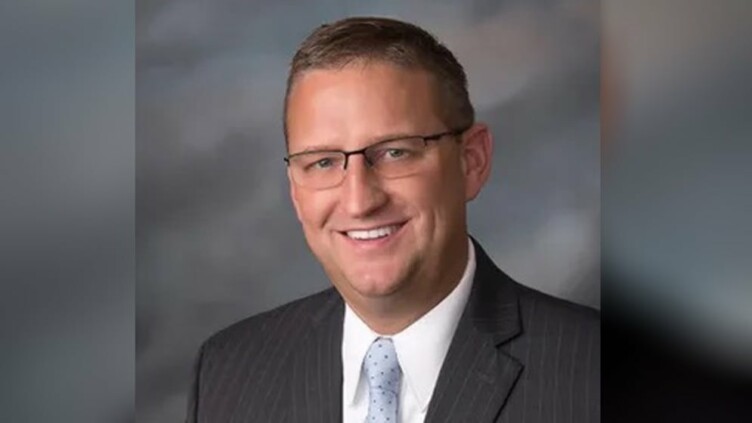

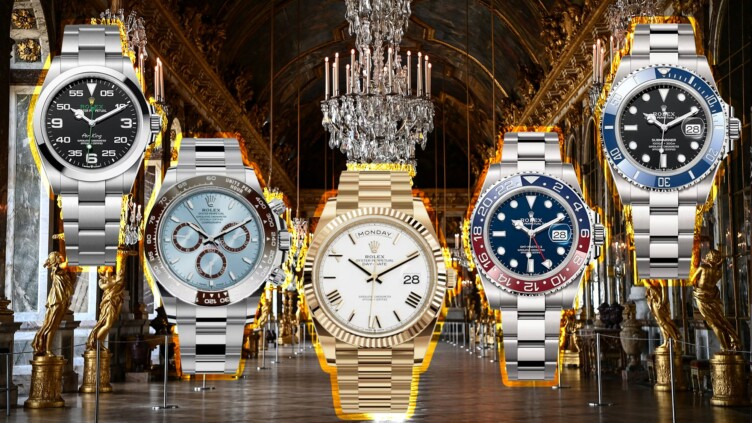





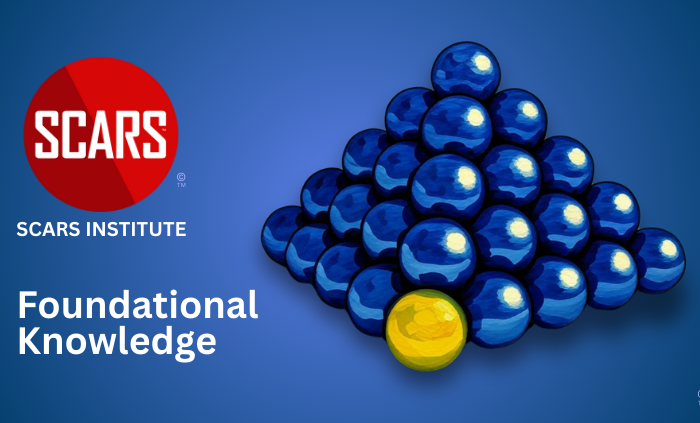
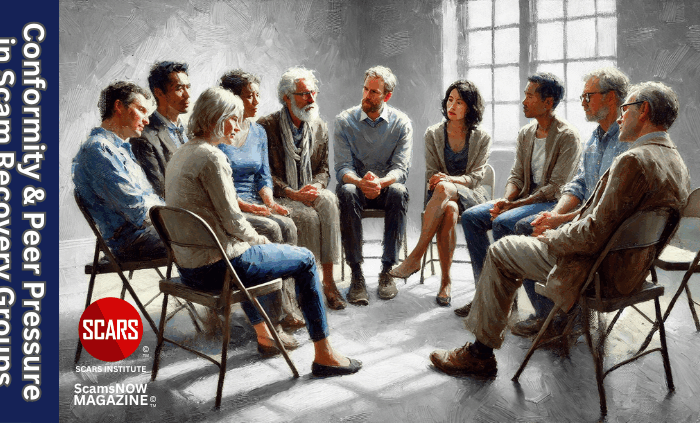
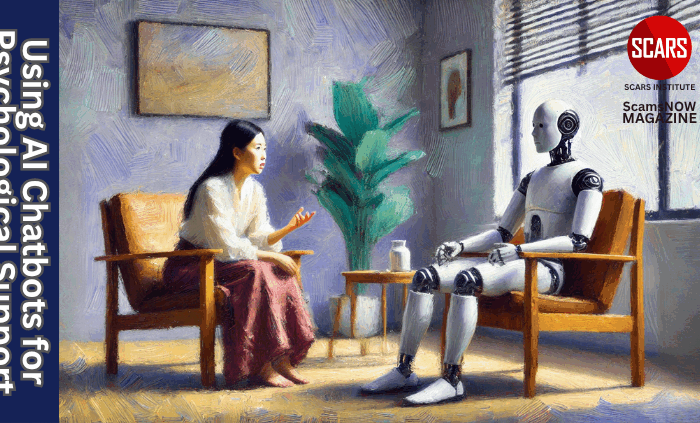

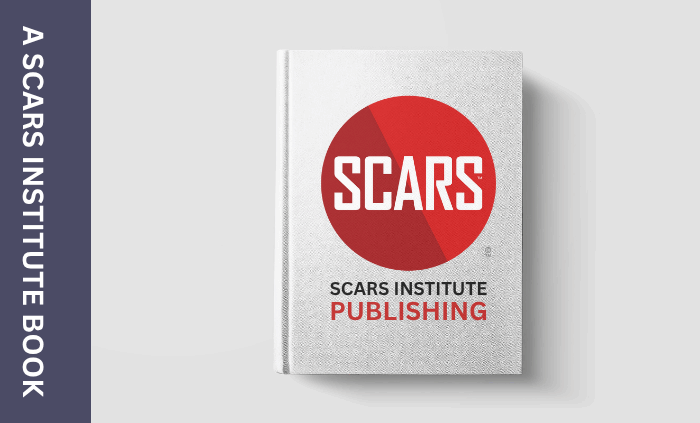

![scars-institute[1]](https://scamsnow.com/wp-content/uploads/2025/04/scars-institute1.png)
![niprc1.png1_-150×1501-1[1]](https://scamsnow.com/wp-content/uploads/2025/04/niprc1.png1_-150x1501-11.webp)

Leave a Reply